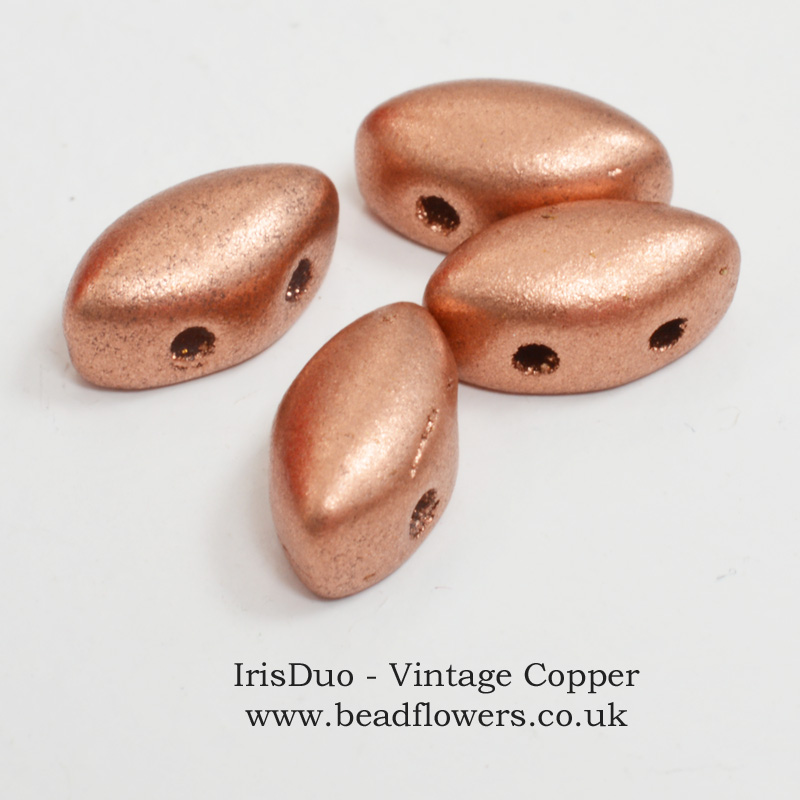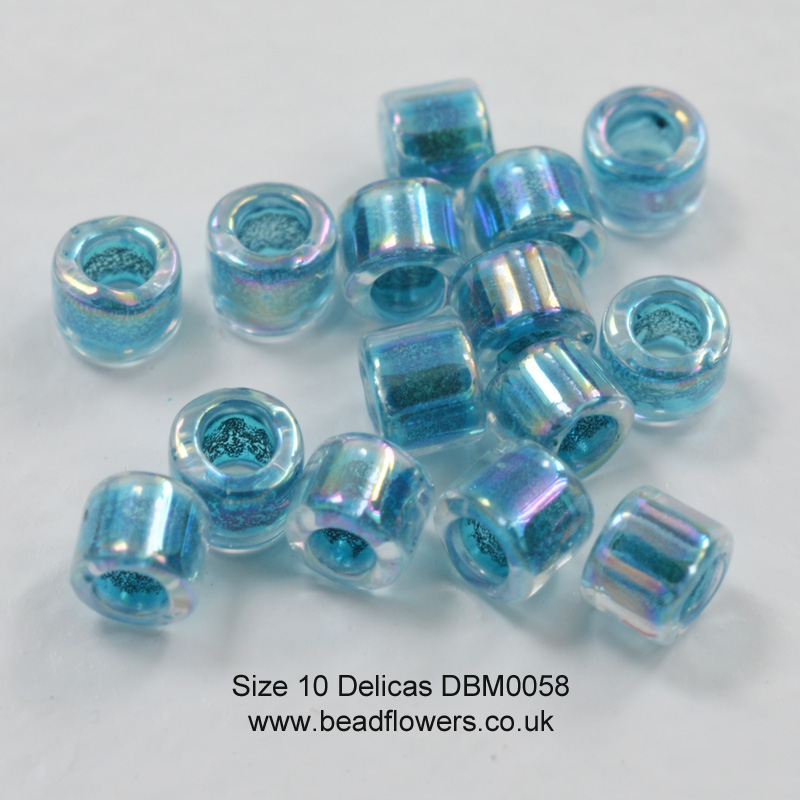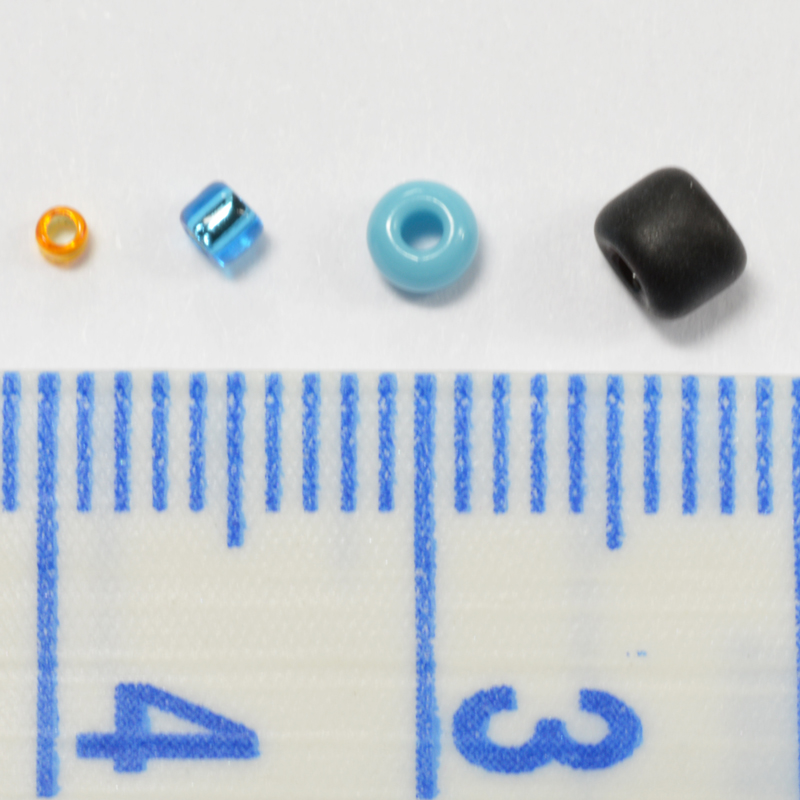How many beads in a gram?
Picture this: you have a new beading pattern that lists 20 IrisDuo beads in the materials. So, you pop to your LBS, or search online and find a shop selling IrisDuo beads. They sell these beads in packs of 9g. So, here’s the million dollar question – how many packs do you need? Well, how many beads in a gram?
Now, I have good news and bad news for you here. There is no definitive guide to tell you how many beads in a gram. So, I can’t give you an easy answer to this question.
But, a lot of good beading shops and distributors will be able to give you that information as you make your purchase… Or, at least, some of that information…

Why can’t I tell you how many beads in a gram?
Strictly speaking, that’s not true. I can give you a good guide as to how many beads in a gram for many types of bead.
BUT… Did you know, different bead finishes have an impact on weight?
Yes, that’s right, the type of finish on a bead can actually change not only its weight, but also its size. The difference is going to be minute, per bead. But when you combine into a pack, this difference will be magnified.
Not by much, to be fair. So, let’s go back to that IrisDuo example I started with. On average, your 9g pack will contain around 56 beads. But in some colours, you may end up with 55, or perhaps 57 (if you’re very lucky!). Possibly, the difference in number may be even greater.
Now, I don’t have a comprehensive answer as to which coatings weigh more. But, as a rule, matte or frosted are slightly lighter. Metallic, or coated beads will be a little heavier because of the metal or the applied coating. So, that may help you to understand whether your pack is likely to contain more or fewer than the average.

How many beads should you buy?
So, back to that original scenario. If you are faced with a pattern that calls for a specific number of beads, yet you are buying in gram packs, what do you do?
Firstly, although you may not know precisely how many beads in a gram, you do have a rough idea.
So, in my example, you need 20 beads. Well, your 9g pack is going to provide you with all of those and more. So, not a problem.

What if your pattern had called for 55 beads? Theoretically, one pack should provide this. So, do you take the risk and get just one, or do you play safe and grab two while you can?
The choice is yours. If you can get to the shop easily, and you’re going to make the project immediately, then it’s probably worth risking one pack.
If you’re buying in advance, or know you can’t get back to the store for a while, I would be tempted to play safe and get two packs. After all, when you go back, you may find the beads are out of stock.
Or, possibly, you will be getting a different batch of beads. Depending on the bead, it is just possible that two different batches will look very slightly different in colour.
But there is no right or wrong answer to this question.

One more word of warning…
Now, I don’t meant to scare you, but let me give you something to think about…
Going back to the point about different finishes changing the weight on beads. When a designer gives you the weight and the bead colour that they used, you can assume that is accurate.
So, how come, you bought the right weight of beads, but when you come to do the project, you run out just a few beads short?
Did the designer make a mistake?
Well, did you use the same colour as the designer? If you changed the bead colour, then that could be the reason you didn’t have enough beads! Just something to consider before you send that message of complaint or bad review about the pattern!

How Many beads in a gram? – a guide…
Now, this isn’t going to cover every single kind of bead on the market. So, if you have information to add here, please leave a comment down below to help others.
But, I have made a start with some of the beads you may be wanting to buy…
Rather than giving you a long list to plough through, I have some even more helpful resources. A lot of manufacturers actually provide this information. So, let me give you some links to follow to the official (and accurate!) data.
Miyuki beads
If you have any Miyuki brand beads, you can use this link to check how many beads in a gram. These include round seed beads (rocailles) in all sizes, cylinder seed beads and shaped seed beads like cubes, Magatamas, drops and more.
(Note: the quantities given are per kilogram, so just divide the total number by 1,000… or take three zeros off the end of the number!)
Toho beads
If you follow this link, you will get a similar chart for the TOHO brand beads. Again, this covers all different beads and the quantities are given in kilos, so you will need to do that simple maths (remove three zeros from the number!)
Matsuno beads
You can use this link to find out how many beads per gram for Matsuno brand. This would include seed beads (rocailles), bugles, peanut beads and more.
Slightly annoyingly, Matsuno give their quantites in lb, rather than kilos. So, to get the number of beads per gram, you need to remove the three zeros. Then multiply by 2.2 (or to keep things simple – double the number and that will give you a little guide).

Preciosa Beads
Now, the PRECIOSA company in the Czech Republic are the brand behind many of the Czech seed beads.
They also have a huge range of shaped seed beads. These include, Twin Holes, Candy Beads, Tee Beads and many, many more.
Their website gives a really comprehensive guide to all their products. But, unfortunately you will need to choose the specific bead to find out how many beads in a gram. So, you can use this link to get to their main product page. From here, select the type of bead you want to know about.
Helpfully, they give their seed bead quantities in both lbs and kilos.

Shaped seed beads and other brands
The beading market is expanding at an incredible rate, with new bead shapes and sizes appearing all the time.
The vast majority of these are being manufactured in the Czech Republic, by quite small factories. So, there isn’t a ‘single manufacturer’ where you can get information about all the bead shapes and sizes.
Plus, you will find some of the shaped seed beads are sold in packs or strings. So, you know how many beads you’re buying.
If you are looking for information about beads like the Paisley Duo, or Gem Duo, you are best to check the product information when you make your purchase. You can also check this link to see a huge range of shaped beads. Each one will tell you how many beads in a gram where necessary.

The Final Answer…A ‘Quick and Dirty’ Guide!
My aim in maintaining this website, is to educate others about beads. So, if you’ve read this far, you might be a little frustrated by now. I know that if you were looking for a quick answer, I haven’t given it to you.
I have found a lot of websites that give a table of ‘how many beads in a gram’. The trouble is, each of those websites gives you a different number. I’m not saying any of them are right or wrong. But as I’ve explained elsewhere, a size 11 seed bead is not ‘just’ a size 11 seed bead. They vary from brand to brand. So, this is why, if you want accuracy, you need to check the actual brand you have, using the links I’ve given you.
If you want ballpark figures for a ‘quick and dirty’ guide. Then here they are for the main seed bead sizes…
- Size 15 seed beads – around 250 beads per gram
- Size 11 seed beads – around 100 beads per gram
- Size 8 seed beads – around 25-40 beads per gram (quite a big difference from brand to brand!)
- Size 6 seed beads – around 15-20 beads per gram
- Size 15 Delica beads – around 350 beads per gram (notice how much they differ from the seed beads!)
- Size 11 Delica beads – around 200 beads per gram (again, notice how much they differ from the seed beads!)
- Size 10 Delica beads – around 100 beads per gram
- Size 8 Delica beads – around 30 beads per gram
What next…?
So, I hope this information has been helpful. Remember, you can follow my blog (just sign up in the right-hand menu) for more posts like this delivered to your inbox. And bookmark this page so you can come back to it any time you need to check how many beads in a gram.













Very good reference article Katie.
Thank you Leslie!